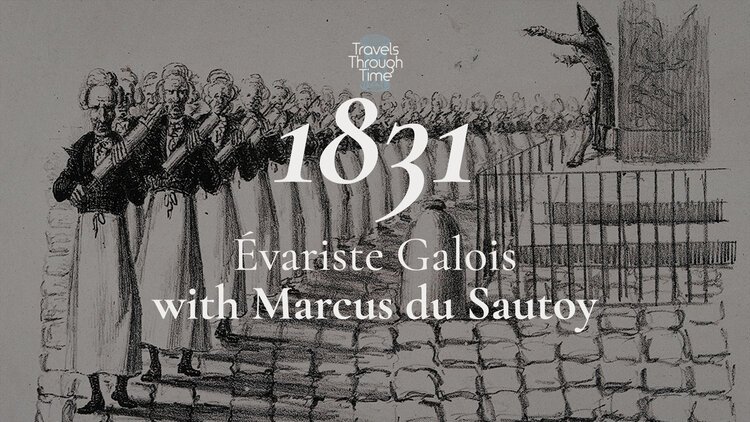The Matter of Everything: Dr Suzie Sheehy (1932)
Dr Suzie Sheehy, author of The Matter of Everything: Twelve Experiments That Changed Our World (Photo credit: Antonio Olmos)
In this episode, we are donning our lab coats and gaining access to the secrets of particle physics. We visit 1932, an astonishing year in the history of science across the world, from Carl Anderson’s rooftop cloud chamber in California, to Marietta Blau’s mountaintop experiments in Austria, via the Cavendish Lab at the University of Cambridge.
*** [About our format] ***
Our guest this week is unusual for Travels Through Time – she is a scientist rather than a historian – but she is also quite unusual within her own field of accelerator physics. Firstly, because she is a woman, and secondly because she is a brilliant communicator, able to beautifully articulate the wonder and complexity of Physics.
Dr Suzie Sheehy currently splits her time between the University of Oxford and her lab in Melbourne, Australia, giving her what must surely be the longest commute on earth. Her scientific epiphany came, as it has for so many people over the centuries, when she was lying in the darkness gazing up at the stars – she felt an overwhelming desire to study and understand the world around us, ‘from the smallest subatomic particles… up to the largest scales of the Universe.’
Aside from her work in the lab designing particle accelerators, Sheehy is passionate about sharing the wonders of physics via TEDx talks, educational outreach programs (CERN), demonstrating experiments to live audiences and a helpful YouTube video explaining How to Make a Cloud Chamber.
In her new book, The Matter of Everything, Twelve Experiments that Changed Our World she tells the major discovery stories of the past century: the cathode ray tube that brought us television, splitting the atom, finding new particles and, of course, the Large Hadron Collider and Higgs Boson.
Behind each of these breakthroughs are the brilliant scientists whose curiosity and persistence made them possible. This involved years of hard work and often serious danger, for example, when crouching underneath cloud chambers, attempting to harness lightening or being far too relaxed about radiation levels.
*** Listen to the Podcast ***
Show Notes
Scene One: 2nd August 1932. The discovery of the positron, Carl Anderson, at Caltech in America.
Scene Two: 14th April 1932. Cavendish Laboratory, Cambridge, the splitting of the atom Ernest Rutherford (at almost the same time James Chadwick discovers the neutron in the same lab!).
Scene Three: 1932. Hafelekar observatory, Marietta Blau and her assistant Hertha Wambacher place 'emulsion plates' 7,500 feet above sea level, near Innsbruck, Austria. They would go on to have a huge impact scientifically, but as women their work was undervalued and overlooked at the time.
Memento: Marietta Blau’s diaries so Dr Sheehy could write about her and fully reveal her genius and achievements to the world.
People/Social
Presenter: Violet Moller
Guest: Dr Suzie Sheehy
Production: Maria Nolan
Podcast partner: Ace Cultural Tours
Follow us on Twitter: @tttpodcast_
Or on Facebook
See where 1932 fits on our Timeline
Particle Accelerators Reimagined with Suzie Sheehy (The Royal Institution)
Featured Images
Listen on YouTube
Complementary Episodes
The Astronomer and the Astrolabe: Seb Falk (1327)
In this episode Seb Falk takes us back to the early fourteenth century to a seminal year in the life of Richard of Wallingford, one of the best-known scholars of his day: a gifted astronomer, inventor, Abbot and ultimately, victim of leprosy.
The Revolutions of Évariste Galois: Professor Marcus du Sautoy (1831)
Marcus du Sautoy The Simonyi Professor for the Public Understanding of Science at the University of Oxford takes us to meet one of his heroes: the brilliant Évariste Galois.
The Magical Mathematician: Prof. Simon Schaffer (1684)
In this episode, Professor Simon Schaffer of the University of Cambridge takes us to three scenes in the year 1684, and to the genesis of that paradigm-shattering book, the Principia Mathematica.











